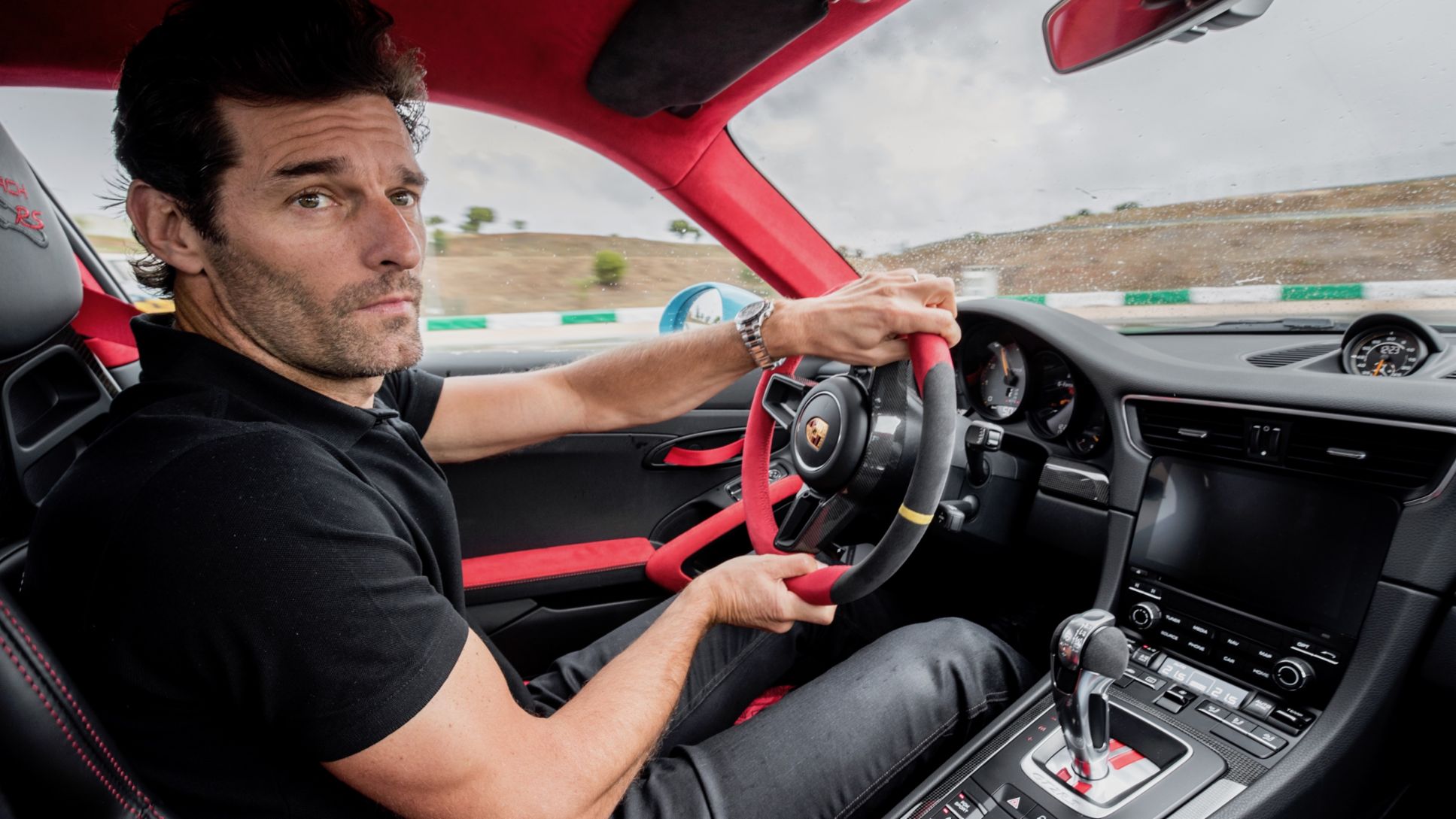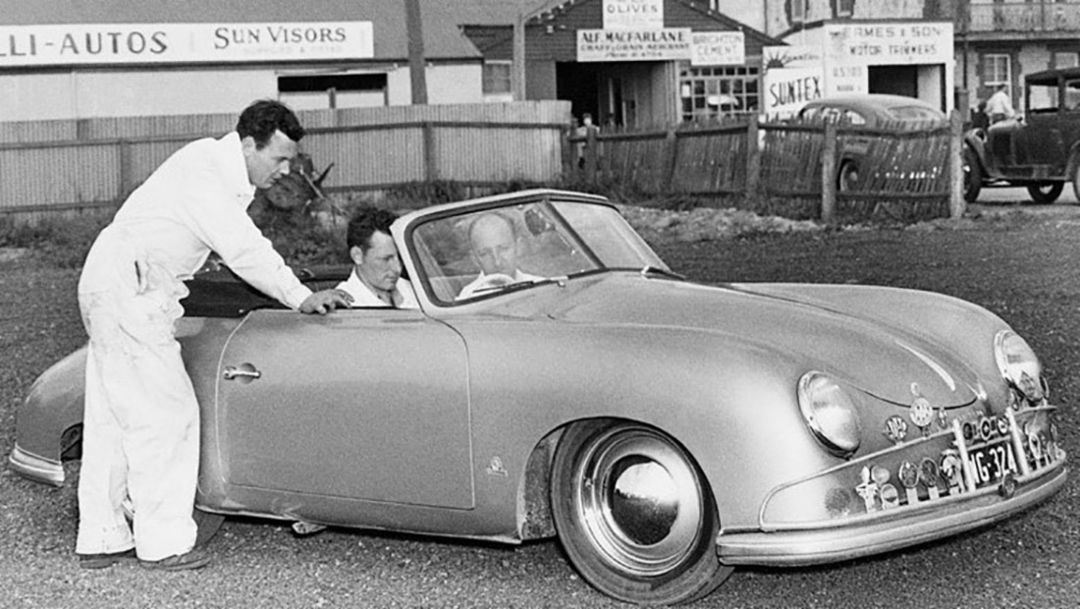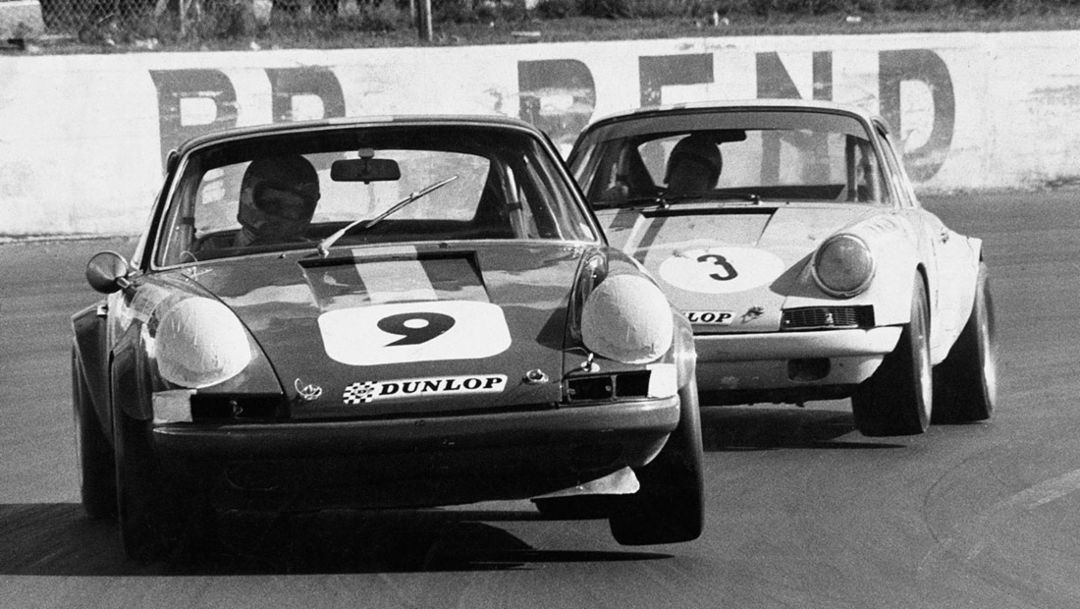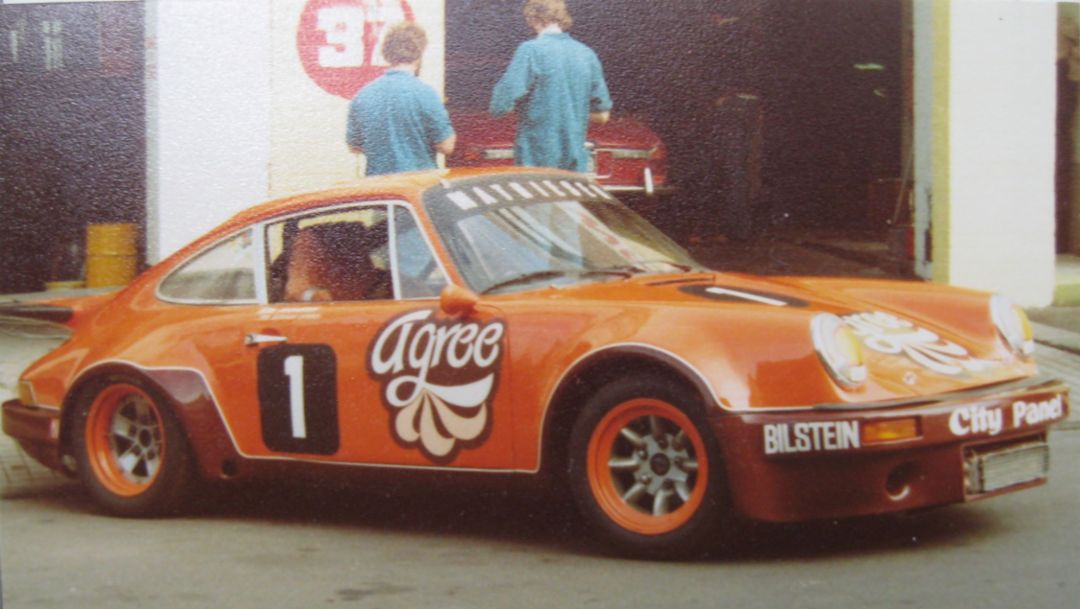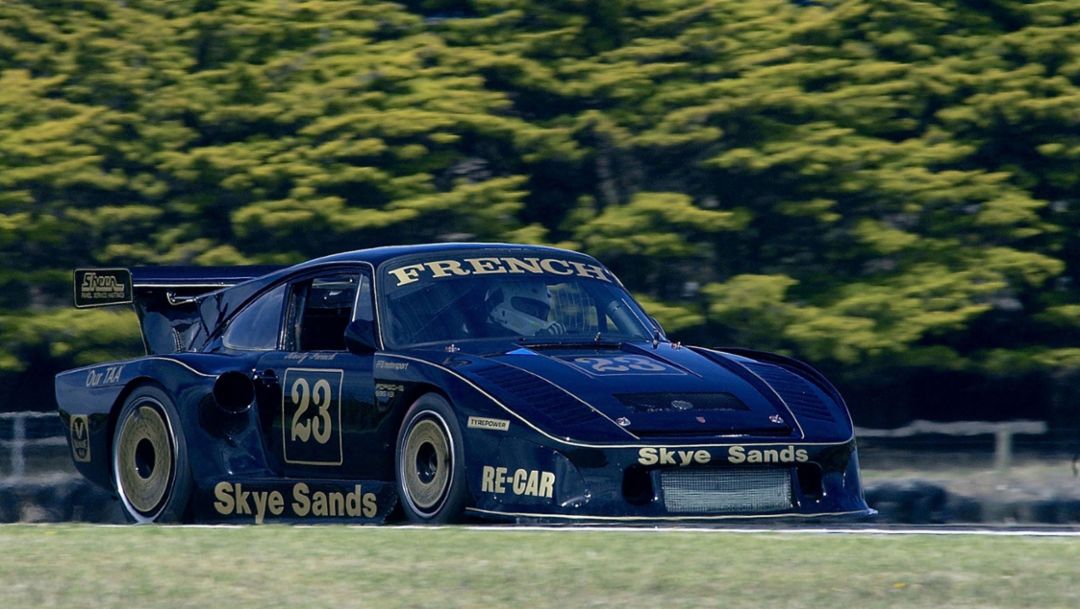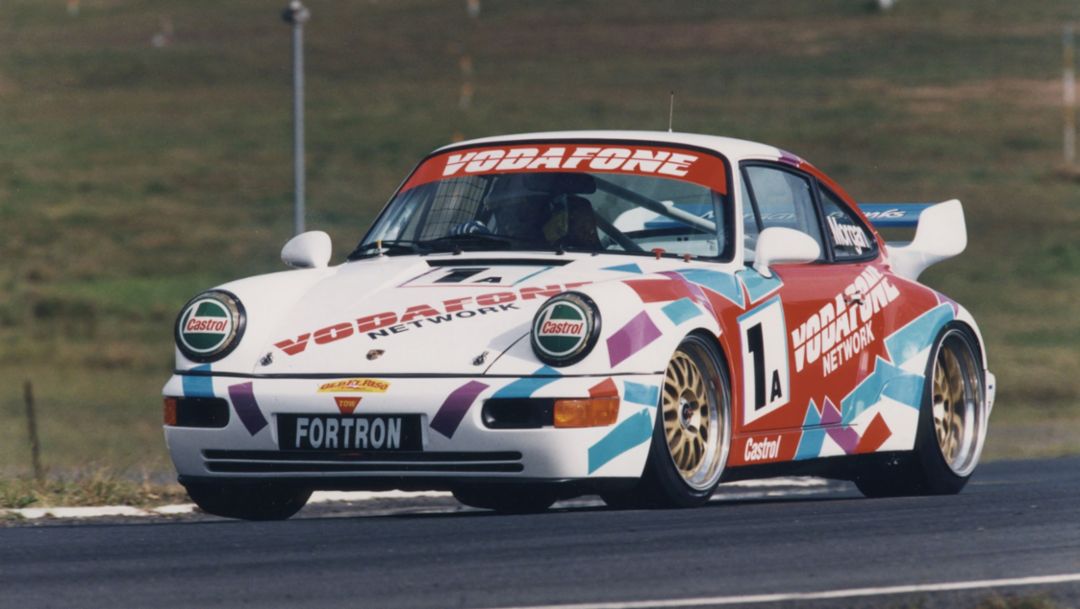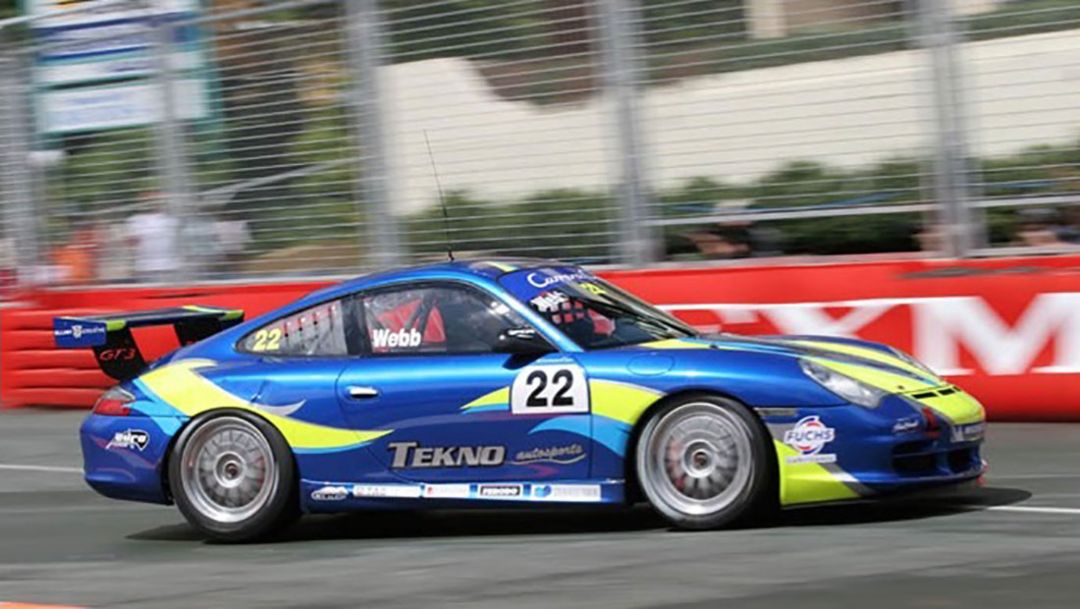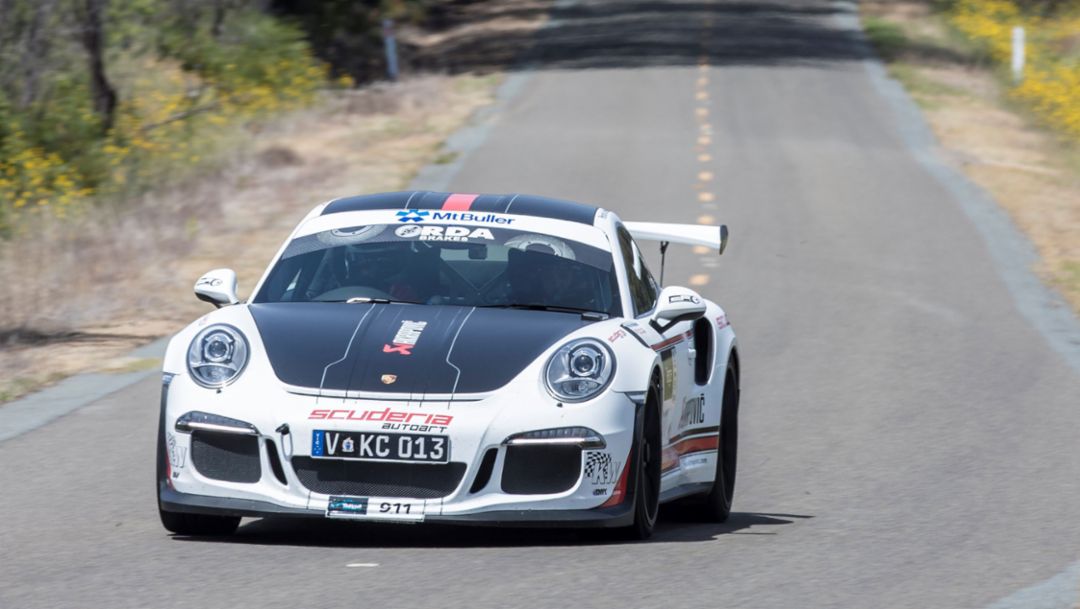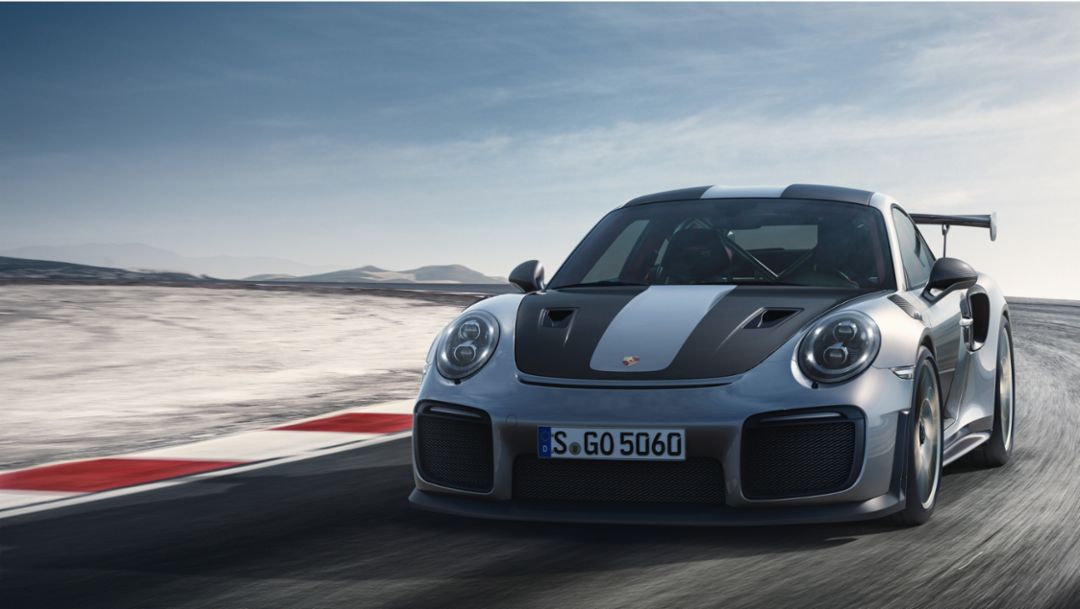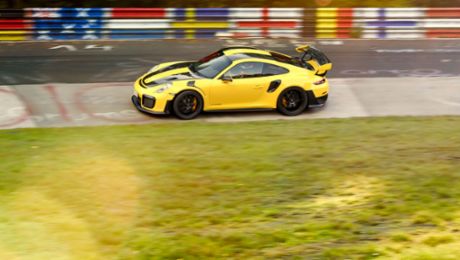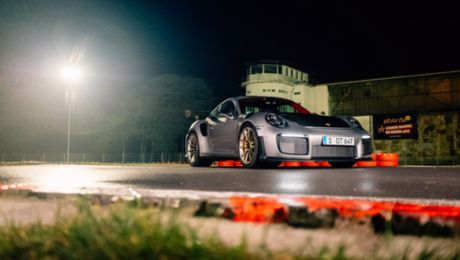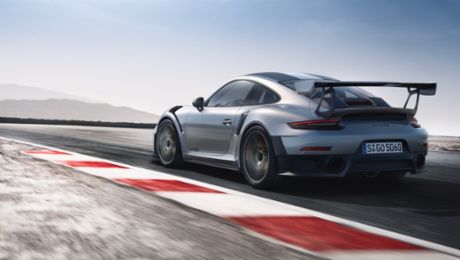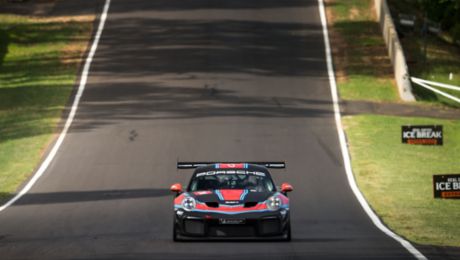The event was the Australian debut of the Porsche 911 GT2 RS, the fastest and most powerful 911 with approval for use on the road. Local hero and Porsche ambassador Mark Webber, who was involved in the development of this high-performance model, was on-hand to drive the GT2 RS around the Albert Park Grand Prix Circuit. The first Australian-bound version of this car was also on display at the event.
Webber and the GT2 RS was a part of the exclusive Porsche Pole Position track activity on the Wednesday prior to the event, where Porsche owners experience the special privilege of driving their Porsche sports cars around the GP circuit at speed.
In addition to the 911 GT2 RS, seven vehicles commemorating the last 70 years of Porsche racing in Australia were on display in the Porschestraße (translation: Porsche street) situated next to the Porsche Wilson Security Carrera Cup Australia paddock, between Turn 1 and the Albert Park Lake. This display ranged from a 1951 Porsche 356 Cabriolet up to a 2017 Porsche 911 GT3 RS. See below for full list and background on each display car.
Test drive through a virtual reality experience
Porschestraße also included the Australian-built Porsche In Motion experience, where enthusiasts had the opportunity to sit in the passenger seat of the iconic Porsche 911 and take it for a test drive through a virtual reality experience, discover the brand’s distinct sporting heritage and explore the latest model range on display.
Returning again in 2018 is the popular Porsche Kids Driving School, where junior race fans could get behind the wheel of a pint-size Porsche on a purpose-built track. Children from 120-150 cm tall could register to participate in the Porsche Kids Driving School, which consists of a theory and driving session, with all participants receiving their very first Porsche Kids Driving School Licence at the completion of the 20-minute session.
One of the highlights of the racing program: Porsche Wilson Security Carrera Cup
On-track, Round 2 of the Porsche Wilson Security Carrera Cup was one of the highlights of the racing program, where 26 new Porsche 911 GT3 Cup cars were be competing for glory in the Pro and TAG Heuer Pro-Am classes.
“We’re delighted to kick-start this year’s 70th anniversary of the Porsche sports car at the Formula 1® 2018 Rolex Australian Grand Prix with a wide variety of activities that should prove popular with sports car fans,” said Porsche Cars Australia Director of Marketing and Motorsport, Toni Andreevski.
Porsche sports cars display
1951 Porsche 356 Cabriolet
This is the first production right-hand drive Porsche built in July 1951 for newly-appointed Porsche agent Norman Hamilton. It arrived in Melbourne with its right-hand drive sister 356 Coupe in October 1951. Both cars spent 1952 on a promotional tour of South Australia and Victoria, driven by well-known racing and rallying identities in local speed events and hill climbs, putting Porsche on the map and paving the way for its glorious motor sport history, which continues to this day.
Display courtesy of car owner, Greg O’Keefe
1969 Porsche 911 ST
Porsches competed as touring cars in Australia from the late 1960s, with Porsche agent Alan Hamilton finishing a close second in the 1969 title – just one point behind the V8 Mustang of Ian Geoghegan. From 1970, new factory-developed 2.3 litre 911 ST coupes in the hands of Melbourne’s Jim McKeown and Sydney’s Brian Foley and Bill Brown, took he fight to the big V8s. The 911 ST displayed is Foley’s former car, which began life as a highly-optioned 911 S 2.2 litre. It finished fifth in the 1970 Australian Touring Car Championship and later competed as a sports sedan, driven successively by Alan Hamilton, Leo Geoghegan, Peter Brock and John Harvey.
Display courtesy of car owner, Ian Henderson
1969 Porsche 911 'RSR'
Representing the 1970s, this well-raced, former 911S 2.0 litre is arguably Australia’s most successful and prolific 911 racing car. Purchased by Melbourne driver Jim McKeown, it was converted to factory 911 ST specification and competed in Shell liv-ery in the Australian Touring Car Championship in the early 1970s, finishing a close second to Norm Beechey’s V8 Monaro in the 1970 title. By the time McKeown sold it at the end of 1971, the 911 had competed in 41 separate races on all major Austral-ian circuits – a figure believed to be a world record for a Porsche ‘Touring Car’. The Porsche then passed through other hands before being rebuilt as a replica Porsche RSR by Melbourne pilot Ross Mathiesen, who drove it to back-to-back titles in the Australian Sports Car Championship in 1978 and 1979.
Display courtesy of car owner, Max May
1978 Porsche 935 K3
Porsches dominated Australian sports car racing throughout the mid-to-late 1970s, winning the Australian Sportscar Championship six times in successive years before focussing on the newly-revived Australian GT Championship in 1982. Porsches immediately dominated this category too, with newly-crowned Australian F1 Champion Alan Jones driving a turbocharged 935 K3 and winning all nine rounds, followed by Rusty French in a similar 935 K3, with Colin Bond third in a Porsche 944 Turbo. French then continued the Porsche GT domination throughout the 1983season, winning the title emphatically in his 935 K3, with other Porsches finishing fourth, fifth and seventh.
Display courtesy of car owner, Rusty French
1993 Porsche 964 RSR
This unique 1992 Porsche 964 is the world’s only factory right-hand drive 3.8 litre RSR out of the 51 track-ready cars built by Porsche for the 1993 season. Combining the 911 Turbo’s wide body with a 3.8 litre naturally-aspirated boxer six-cylinder engine developing 350bhp, the RSR was the racing version of the now highly-collectible 3.6 litre 964 RS of 1992. This RSR was built to special order for Sydney’s Geoff Morgan, who drove it to victory in the Australian Porsche Cup in 1995 and 1996. It is now owned by former Porsche Cup competitor Chris Stannard, who has restored it to its original factory glory.
Display courtesy of car owner, Chris Stannard
2004 Porsche 911 GT3 Cup
The Porsche Carrera Cup Australia was established in 2003 as Australia’s premier one-make racing series. A full grid of 996-series 911 GT3 Cup cars lined up for the first event at the 2003 Australian F1 Grand Prix support race, and at the end of the first season it was seven-time Bathurst winner Jim Richards who was crowned the inaugural champion. This beautifully-preserved 2004 GT3 Cup, prepared by Tekno Autosports and driven by Jonathon Webb, finished sixth and third respectively in the 2004 and 2005 Porsche Carrera Cup Australia Championships. The 911 GT3 Cup is now owned by Porsche Club of Victoria member James Papas. It remains totally original and has not been raced since the end of the 2005 Porsche Carrera Cup Australia Championship.
Display courtesy of car owner, James Papas
2017 Porsche 911 GT3 RS
Victorian Marine Pilot Matt Close has put Porsche back on the podium in Australian tarmac rallies in recent years, driving current-model 911 GT3 coupes. He and co-driver Cameron Reeves won Victoria’s Targa High Country Rally three years in succession in 2015, 2016 and 2017. They also won Targa Tasmania’s GT2 category in 2016 and finished third outright in 2017 driving current-model 911 GT3 and GT3 RS models. Close and Reeves will again be amongst the favourites in the 2018 Targa Tasmania from April 16-18, driving this GT3 RS.
Display courtesy of car owner, Matt Close
2018 Porsche 911 GT2 RS
Not historic, but already a history-maker and on display in the adjacent Porsche in Motion display, the new 911 GT2 RS last year established a new Production Car lap record on the demanding Nurburgring Nordschleife circuit. The new 515kW (700bhp; Fuel consumption combined 11.8 l/100 km; CO2 emissions 269 g/km), lightweight rear-wheel drive turbocharged coupe can sprint from 0-100km/h in just 2.8 seconds, on its way to a top speed of 340km/h. Its driver for the weekend will be former F1 driver and Porsche World Endurance Champion Mark Webber, who already has a 911 GT2 RS on order for his personal Porsche collection.
Consumption data
911 GT2 RS: Fuel consumption combined 11.8 l/100 km; CO2 emissions 269 g/km
911 GT3: Fuel consumption combined 12.9 – 12.7 l/100 km; CO2 emissions 290 – 288 g/km
911 GT3 RS: Fuel consumption combined 12.8 l/100 km; CO2 emissions 291 g/km
